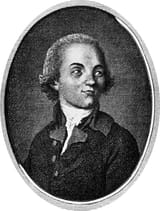Search Results
7/8/2025, 11:19:02 PM
>>509864778
>The sources:
>The main primary sources for the tale are two sets of memoirs, the first by the clergyman and naturalist Jean-Louis Soulavie, published in 1801 [Reading 1] and the second by the former royalist army officer d'Allonville, published in 1838 [Reading 2]. Soulavie, whose writings are known to contain a fair amount of fabrication, records Orléans's own account "in almost his own words" - though it is not clear whether Soulavie himself heard him first-hand.D'Allonville's text, though much later, records the testimony of one of d'Orléan's companions at the time, the duc de C*** (?? de Croy). This too contains a version of d'Orléan's own narrative. D'Allonville talked to his informant and took notes in about 1795. He observes that the prince de Léon, who had also been present, added his corroboration
>There is a general sense that some version of the story was well known in the early nineteenth century, at least in Masonic circles. Orléans's execution in 1793 added to the sense of hubris and encouraged a new layer of speculation. The occultist Madame de la Croix imagined that she herself had broken the protective spell conferred on Orléans and sent him to the scaffold [Reading 6]
>When and where was the incident supposed to have taken place?
>D'Allonville writes that he was given an exact date, but his notes had become illegible. He tells us that Orléans was resident at the time at Le Raincy, where he hunted daily with a "crowd of young people". The 19th-century historian Capefigue reasonably infers this would be just after 1785 when Orléans's inherited his title on the death of his father
>As to location, the two sources unfortunately contradict each other. In d'Allonville's version the apparition appears in the forêt de Bondy, quite near to Le Raincy, whereas Soulavie (slightly vaguely) refers to the plain of Villeneuve-Saint-George
>The sources:
>The main primary sources for the tale are two sets of memoirs, the first by the clergyman and naturalist Jean-Louis Soulavie, published in 1801 [Reading 1] and the second by the former royalist army officer d'Allonville, published in 1838 [Reading 2]. Soulavie, whose writings are known to contain a fair amount of fabrication, records Orléans's own account "in almost his own words" - though it is not clear whether Soulavie himself heard him first-hand.D'Allonville's text, though much later, records the testimony of one of d'Orléan's companions at the time, the duc de C*** (?? de Croy). This too contains a version of d'Orléan's own narrative. D'Allonville talked to his informant and took notes in about 1795. He observes that the prince de Léon, who had also been present, added his corroboration
>There is a general sense that some version of the story was well known in the early nineteenth century, at least in Masonic circles. Orléans's execution in 1793 added to the sense of hubris and encouraged a new layer of speculation. The occultist Madame de la Croix imagined that she herself had broken the protective spell conferred on Orléans and sent him to the scaffold [Reading 6]
>When and where was the incident supposed to have taken place?
>D'Allonville writes that he was given an exact date, but his notes had become illegible. He tells us that Orléans was resident at the time at Le Raincy, where he hunted daily with a "crowd of young people". The 19th-century historian Capefigue reasonably infers this would be just after 1785 when Orléans's inherited his title on the death of his father
>As to location, the two sources unfortunately contradict each other. In d'Allonville's version the apparition appears in the forêt de Bondy, quite near to Le Raincy, whereas Soulavie (slightly vaguely) refers to the plain of Villeneuve-Saint-George
Page 1
